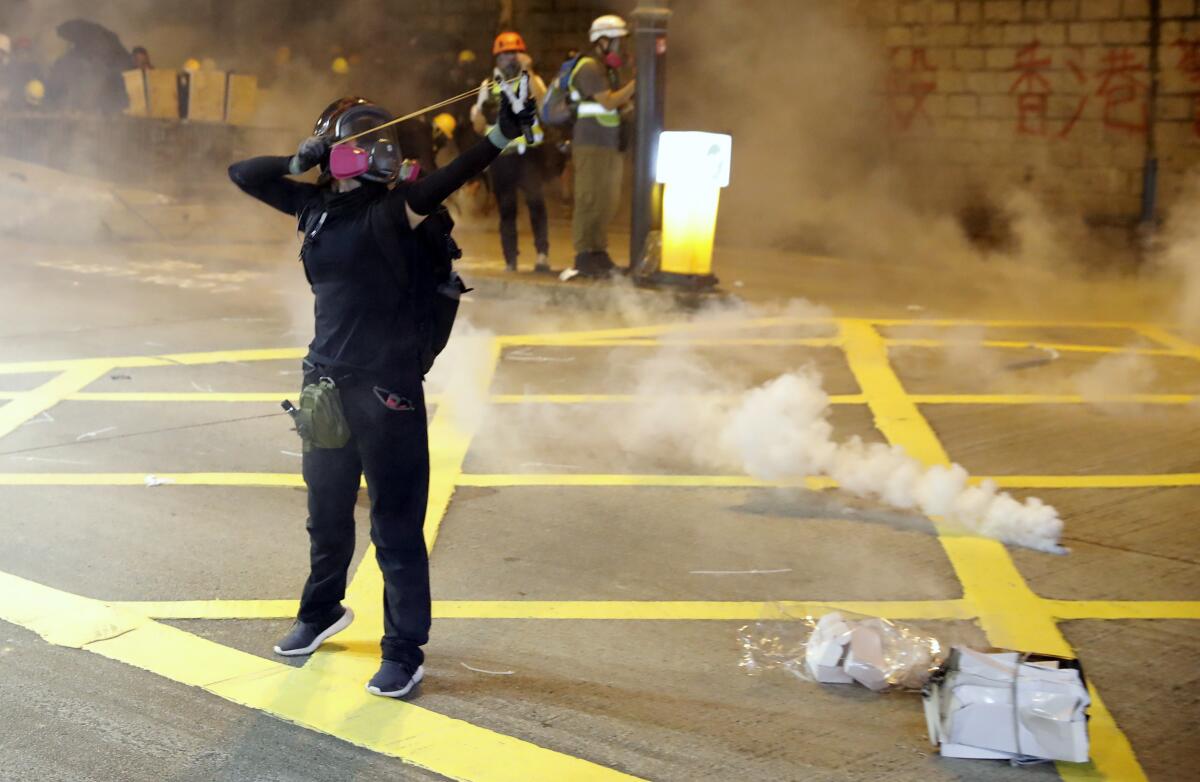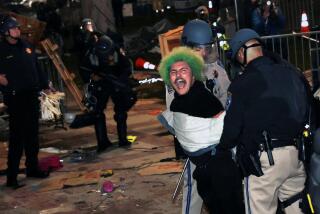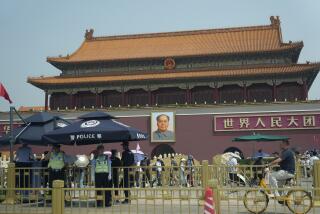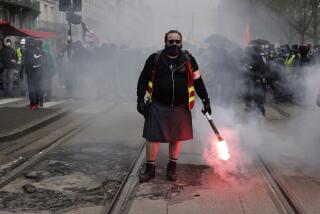Hong Kong protesters and police face off in familiar cycle

On one end of a Hong Kong street, protesters dressed in black ducked behind umbrellas and makeshift barricades, occasionally throwing bricks or slinging rocks. On the other end, police decked out in riot gear shouted warnings and fired tear gas.
As the late hours of Saturday stretched into the early hours of Sunday, neither side budged.
Standoffs between demonstrators and authorities have become a weekly occurrence in Hong Kong, a semi-autonomous Chinese territory that has been roiled by a summer of fiery protest. What began as demonstrations against a now-suspended extradition bill has ballooned into a broader call for greater democratic freedoms and government accountability.
The now-familiar cycle of rallies, police interventions and clashes between the two sides has splintered the city. While tens of thousands marched Saturday through Mong Kok, a bustling shopping area, to call for an inquiry into alleged police brutality, another several thousand in a different part of the city gathered to show support for law enforcement.
At one rally, attendees chanted: âSupport the Hong Kong police to strictly enforce the law!â At another, protesters yelled: âPolice know the law and break the law!â
Several pro-democracy rally participants expressed disappointment in what they viewed as abusive and negligent behavior from police in recent weeks. After thugs dressed in white beat up people inside a commuter rail station, leaving 44 injured, Hong Kong residents accused the police of deliberately being slow to respond. Police, meanwhile, said their resources were stretched because of the ongoing protests.
âI feel so hurt,â said Zarine Chau, a 56-year-old security guard who was at the pro-democracy march. She said she rarely got involved in politics in the past, but felt moved to do so after seeing videos of police swinging their batons at protesters.
âWhy doesnât the government answer to us?â Chau asked.
Members of the movement have demanded the resignation of Hong Kong leader Carrie Lam. As with all the cityâs chief executives, Lam was not elected by the general population but rather chosen by a committee dominated by pro-Beijing elites.
When Britain returned Hong Kong to China in 1997, the city was promised certain freedoms under the framework of âone country, two systems,â creating a distance between the territory and the Communist Party-ruled central government on the mainland. In recent years, however, some Hong Kong residents have accused Beijing of chipping away at their democratic rights as booksellers and activists have been arrested. The proposed extradition legislation would have allowed Hong Kong residents to be sent to the mainland to stand trial.
An undercurrent of fear toward the Communist Party has propelled the nearly two months of protests. After protesters defied police orders to end their Saturday march at a pre-approved time and place, some scaled a flagpole near the iconic Victoria Harbour, removed from it the Chinese national flag, and flung the flag into the water.
Shortly afterward, a 38-year-old protester named Paladin Cheng planted himself beside the poles with his own set of flags, which read âHong Kong Independence.â
âWeâre losing our freedom little by little,â said Cheng, who was clad in head-to-toe black with a black visor and face mask. âThose who donât support Hong Kong independence will have no choice but to become Chinese.â
A similar act a few weeks ago infuriated authorities in Beijing. After another rally that did not disperse, some demonstrators threw eggs and black paint at the national emblem on the Liaison Office, which represents the mainland government in Hong Kong. China called the vandalism a âviolentâ act that challenged its authority.
Protests in Hong Kong have seen participation from all parts of society. In Mong Kok on Saturday, many shops along the protest route closed early, but those that remained open offered free water to participants. One corner shop had on prominent display their selection of umbrellas, a symbol of pro-democracy movements in the city. Several drivers yelled words of encouragement from the inside of passing cars even as they struggled to make their way through the crowded street.
As demonstrators blocked off roads and one major tunnel, set up first aid stations and handed out helmets, onlookers watched from the sidelines. Many had mixed feelings about the movement.
Ryan Chan, a 35-year-old chemist, said he sympathized with the protestersâ ideals but was dismayed that peaceful demonstrations were increasingly devolving into violence and creating chaos in the city.
âIâm fairly certain that the vast majority of people in Hong Kong do not like violence,â he said. âThe atmosphere here is becoming more and more uncomfortable.â
Police warned in a media briefing earlier in the day that those who continued beyond the permitted route would be participating in an illegal, unauthorized assembly. Last week, 44 protesters were charged with rioting, which carries a maximum penalty of 10 years.
After scores of officers in riot gear appeared to clear the streets Saturday, some protesters set fire to trash bins and pieces of cardboard, and used slingshots to hurl rocks. Others threw bricks at and spray painted inflammatory language on the outer walls of a police station, then smashed the windows of a car parked in its lot.
Clad in their signature hard hats, black shirts and face masks, they once again created barricades with reappropriated road barriers. âOne two, one two,â the protesters chanted as they fell back in step, only to suddenly charge at police minutes later. Police in turn threw canister after canister of tear gas, enveloping the streets with smoke.
As the standoffs dragged on, police also blocked local residents and tourists from returning to their homes and hotels. A mainland Chinese tourist surnamed Wang said he thought the protesters were naive.
âItâs impossible for one country, two systems to last,â said Wang, a retired police officer. âSooner or later, they will rejoin China, and our government will deal with them.â
At least for the time being, the protesters seem to be gearing up for a drawn-out struggle. Even as they were retreating from tear gas, they were looking ahead to another planned demonstration, shouting: âStrike on Monday!â
More to Read
Sign up for Essential California
The most important California stories and recommendations in your inbox every morning.
You may occasionally receive promotional content from the Los Angeles Times.










